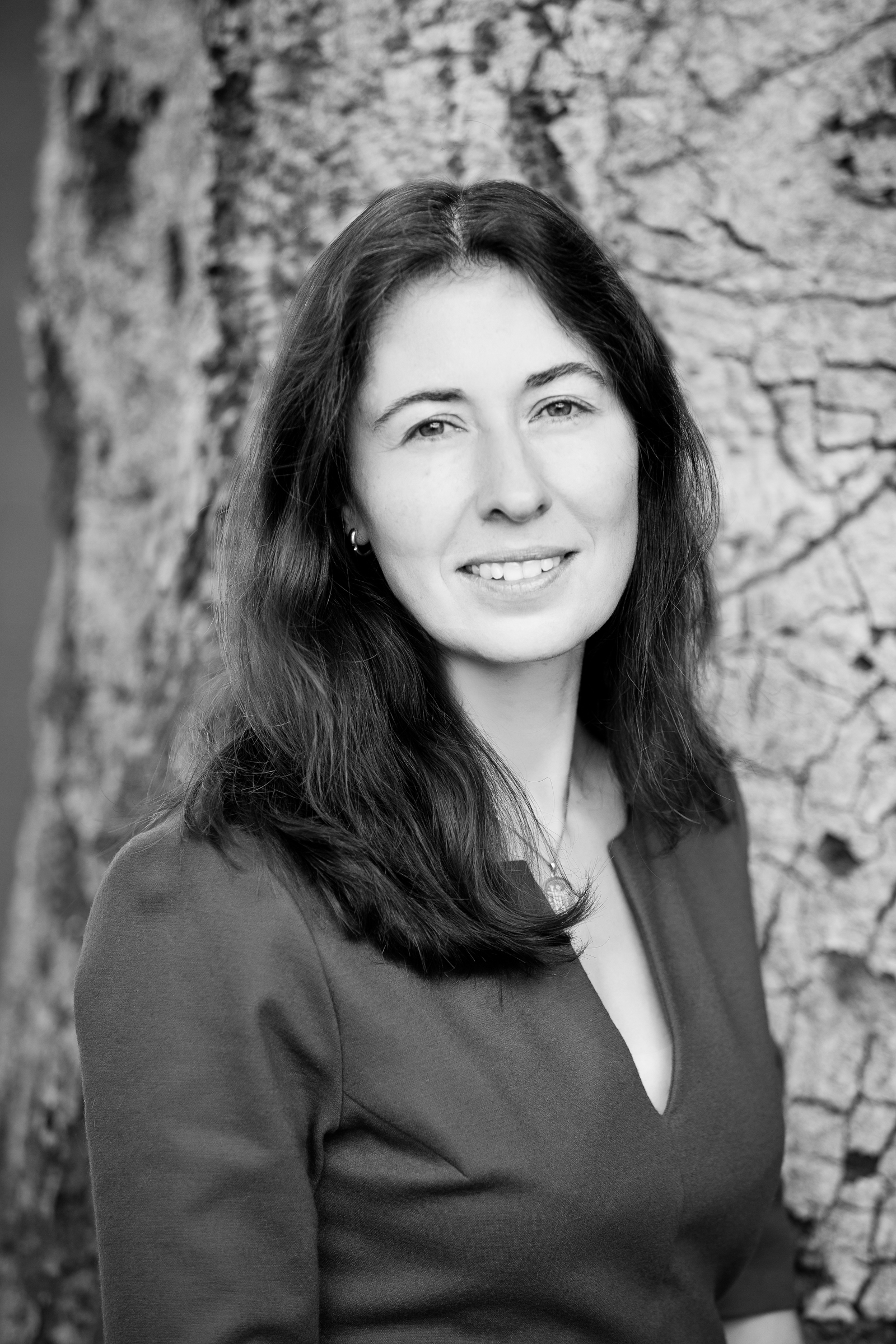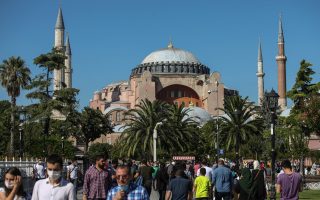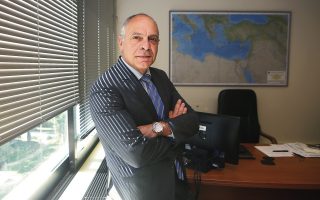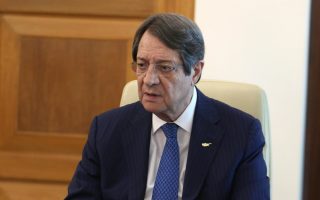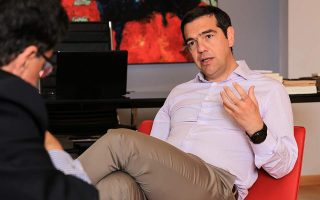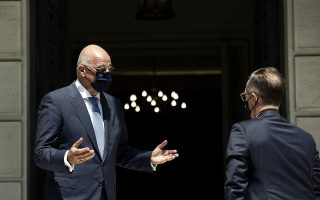‘Hagia Sophia is a powerful political symbol’
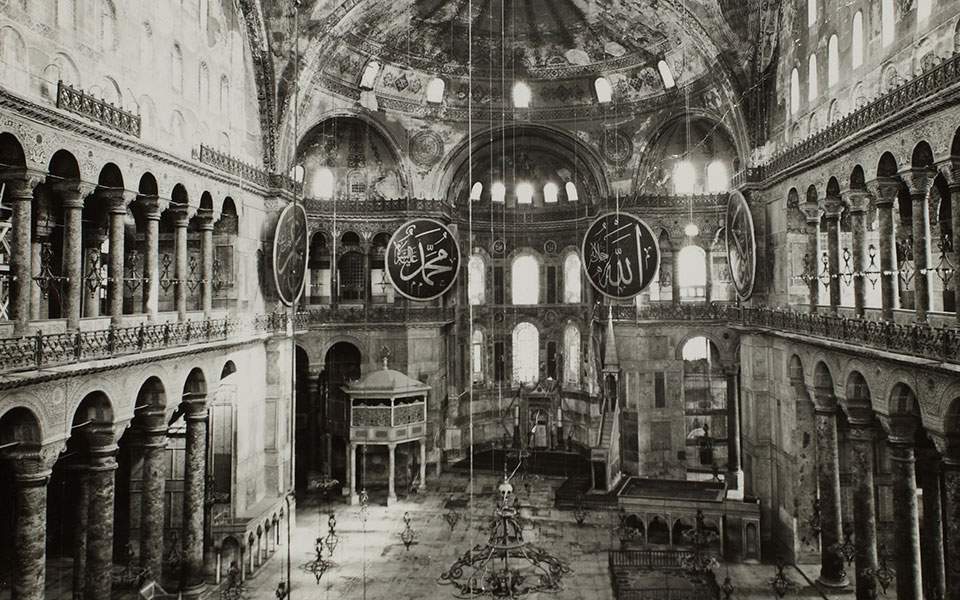
Bissera Pentcheva, a professor of classics at Stanford University, is an internationally renowned scholar on Hagia Sophia. Her book “Hagia Sophia: Sound, Space and Spirit in Byzantium” received the 2018 Award in Historical Studies from the American Academy of Religion.
Pentcheva spoke to Kathimerini about the special role that the UNESCO World Heritage site in Istanbul, which is being converted into a mosque by the Turkish government, has played through the centuries.
What distinguishes Hagia Sophia from other churches and monuments in the Christian world?
Hagia Sophia is the largest domed interior from the Middle Ages; its cupola rises over 50 meters above the floor, and no other Western medieval cathedral has achieved the same feat. The interior also preserves its authentic 6th-century marble floor, revetments and gold mosaics. This material fabric has a chameleonic presence – poikilia – that changes appearance from gleam to incandescence by the shifts of sun rays and light moving in the space in the course of the diurnal cycle. Thus Hagia Sophia shows to this day how divine presence is manifested in the phenomenality of gold and marble, beyond anthropomorphic figuration. Sun rays penetrating the interior create paradoxical effects; the beams appear like columns of light, while the actual marble columns seem to dissolve in shadow. The book-matched Proconnesian slabs further display in their veins an uninterrupted pattern of waves that suggests the image of the lapping water of the sea. The interior with its temporal play of light mobilizes the mytho-poetic power of architecture to conjure the image of the Genesis, of the Spirit hovering over the primordial ocean. As a museum, Hagia Sophia could still be experienced as this temporal eikōn poikilē of the Holy Spirit. In winter, when the sun sets earlier in the day, the marmarygma of marble and gold becomes alive and enacts the Spirit entering matter; a body that becomes empnous. The space continues to mesmerize with its partial views, and this is what stirs the visitors to be continuously in motion, to explore by walking unhindered in the space. So even when no liturgical services are performed in this space, its form and material flux, communicate the presence of the metaphysical in the phenomenal.
As a noted international scholar on Hagia Sophia, what is your own opinion regarding the Turkish government’s decision to reconvert the museum into a mosque?
Hagia Sophia is a powerful political symbol. It anchors the modern secular identity of the Republic of Turkey as established by its founding father, Mustafa Kemal Ataturk, in 1923. He encouraged the historical study of the space and already in 1931 he supported the survey of Thomas Whittemore and the Byzantine Institute of America. Based on the results of this initial study, the plan for the secularization of Hagia Sophia progressed and on November 24, 1934 the decree for the conversion of the building into a museum was announced by the Turkish Council of Ministers, the Vekiller Heyeti. The main ground for this conversion was the plan to modernize and secularize: two pillars on which the new republic’s image was built and set in contrast to the Ottoman past. The Vekiller Heyeti stated: “Owing to its historical significance, the conversion of the Hagia Sophia Mosque in Istanbul – a unique architectural monument – into a museum will gratify the entire Eastern World and will cause humanity to gain a new institution of knowledge.” What is emphasized as the reason behind this conversion into a museum is the universal, historical value of the monument and its being an “institution of knowledge.” We can hear the reverberation of this idea in the media. On March 25, 1935 an article in the newspaper Milliyet declared: “The conversion of Hagia Sophia to a museum, socially speaking, is a very significant event, not only in our history but also in the history of humanity. There are other examples where a shrine is assigned for another program in history. However, all those examples – as far as we can remember – were converted after battles amongst nations. Whereas Hagia Sophia is converted from a shrine into a museum of science almost in one day in complete quietness.” It is these concepts of universalism, respect, peace and science that have been challenged in the recent political developments regarding the fate of Hagia Sophia and the drive to change its jurisdiction from the control of the Ministry of Culture to that of Evkaf Umum Mudurlugu (General Directorate of Pious Institutions).
Hagia Sophia was a mosque for almost five centuries – until 1935. Did this change of religious use damage or affected the character of the monument?
Yes, of course there were changes, but there was also a very careful husbandry. Up until 1462 Hagia Sophia was the only Friday mosque in Istanbul. Among the immediate changes introduced in the space were the additions of mihrab, minbar, the first two minarets and the establishment of a medrese in the grounds. The Byzantine figural mosaics were whitewashed only in the second half of the 17th century and this coincides with the drive to imbricate the building even further in the Ottoman sultanic ceremony and memory. This period witnesses the rise and agglomeration of royal tombs around the building: those of sultans Selim II (1566-1574), Murad III (1574-1595) and Mehmed III (1595-1603). This evidence suggests that when the empire was advancing and conquering in the first century of Ottoman rule, the building was left with minimal changes. But after the end of the great age of Suleyman I (1520-1566), the beginning of a significant intervention in its fabric was seen. This tide was reversed during the reign of Abdulmecid (1839-1862) who promoted a policy towards modernization and westernization. He invited the Swiss Fossati brothers to restore and structurally reinforce the building. During this campaign, in 1847-1849, the building was first studied by Western scholars. The Fossatis discovered Byzantine mosaics. When sultan Abdulmecid saw them he was so impressed that he exclaimed: “They [the mosaics] are beautiful, hide them because our religion defends [such a practice, i.e. to whitewash figural decoration in religious spaces], but do not destroy them because who knows what the future holds.”
He was right, and a new age came with Kemal Ataturk, which made the unveiling of the Byzantine fabric and study of Hagia Sophia possible. [Turkish President Recep Tayyip] Erdogan is challenging the legacy of the forefathers of the Turkish Republic, whose goals were respect, peace and participation in international efforts for the preservation of the universal value of historical monuments. Erdogan rallies his Islamicist base, pushing it to the limelight and using it to eradicate the legacy of Kemal Ataturk. The Turkish people stand before a difficult choice and they have to make this decision under oppression of free speech and freedom.
Does the conversion of Hagia Sophia into a mosque signify a firmer distancing of Turkey from Europe and the West, its possible repositioning as a power antagonistic to Europe? And how should the Western political and academic world react to the decision?
I think we need to distinguish Erdogan and his Islamicist base from the rest of Turkish society. His actions go at the heart of modern, secular Turkish identity and bring pain and suffering first and foremost in the democratic spheres of that society. These are the people who challenged Erdogan and elected the democratic mayor of Istanbul, Ekrem Imamoglu. It is their democratic voice that Europe should support and find effective ways to do so rather than condemning Turkey as a monolith.
